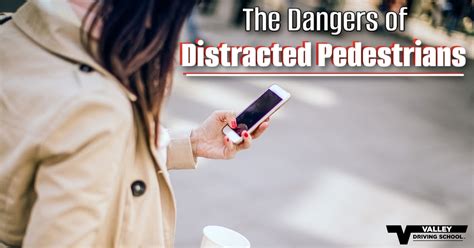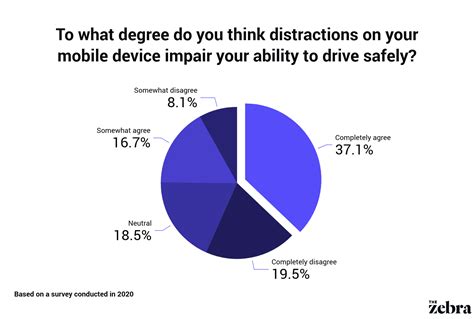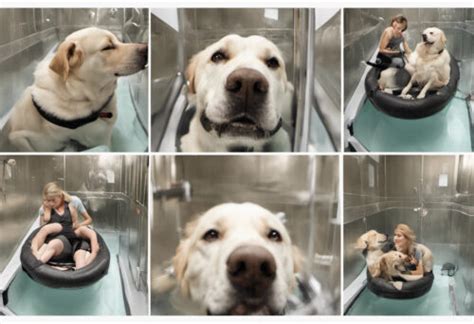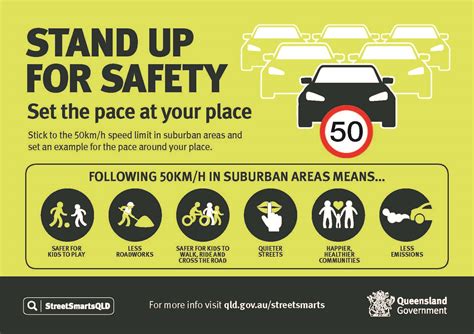While navigating the urban landscape, one constantly encounters a myriad of sensory distractions. More often than not, individuals find solace in their personal auditory cocoons. As technology continues to advance, the appeal of immersing oneself in the melodies of their favorite tunes is undeniable. However, in the midst of this harmonious escape, an alarming hazard lurks – obliviousness to the surrounding environment.
Unveiling the unseen dangers
Imagine being lost in the ether of rhythm and lyrics, completely oblivious to the world that thrives around you. A bustling metropolis, filled with honking, roaring, and bustling noise, transforms into a silent arena. At first glance, one might perceive this deafening silence as tranquil. Yet, it conceals the potential for disaster. Remaining unaware of what lies mere feet away can have dire consequences, turning a casual stroll into a dangerous gambit.
Awareness: the key to survival
In a world consumed by constant motion and unpredictability, the power of one's senses should never be underestimated. The simple act of removing headphones prior to crossing the road can become the fine line between life and death. It is within this split second that critical decisions are made, and the alertness of an individual becomes their greatest ally. Through heightened awareness, one can discern the approaching echoes of emergency sirens or the faint rumble of an oncoming vehicle – cues that may go unnoticed when clothed in an artificial soundscape.
The hazards of distracted pedestrianism

Modern society is witnessesing a growing trend that poses a significant risk to public safety - distracted walking. Engrossed in various distractions such as electronic devices and audio accessories, pedestrians are becoming more vulnerable to accidents and injuries. This article explores the dangers associated with distracted pedestrianism and highlights the importance of staying alert while navigating through urban environments.
| Danger | Description |
| Impaired Awareness | When individuals are engrossed in their devices, they often fail to perceive their surroundings adequately. This lack of awareness can prevent pedestrians from noticing potential hazards, such as approaching vehicles or uneven surfaces, increasing the likelihood of accidents. |
| Reduced Reaction Time | Using electronic devices while walking leads to delayed reaction times when unexpected situations arise. Divided attention diverts cognitive resources away from processing environmental cues, causing pedestrians to react more slowly and increasing the risk of collisions. |
| Decreased Visual Field | Headphones and other accessories can obstruct a pedestrian's field of vision, impairing their ability to see approaching vehicles, cyclists, or pedestrians. Peripheral vision is crucial for detecting potential dangers, and distractions significantly limit this essential visual range. |
| Disrupted Auditory Perception | By using headphones or other audio devices, pedestrians compromise their ability to hear important auditory cues. Honking horns, sirens, or warnings from fellow pedestrians become muffled or entirely indistinguishable, making it difficult to react appropriately to potential dangers. |
| Increased Unpredictability | Distracted walkers are more likely to behave erratically or unpredictably, as their attention is divided. Such erratic movements can confuse drivers or fellow pedestrians, leading to accidents caused by miscommunication and uncertainty. |
In conclusion, engaging in distracted walking puts pedestrians at unnecessary risk and endangers their safety, as well as that of others. By recognizing the hazards associated with these distractions, individuals can take important steps to remain focused and vigilant while navigating urban landscapes, thus promoting a safer pedestrian environment.
The Importance of Attentiveness in Ensuring Road Safety
In our fast-paced world, being alert and aware of our surroundings is essential for ensuring personal safety, particularly when navigating the complex and ever-changing landscape of roads. This becomes even more critical when engaging in activities that may distract or impair one's ability to perceive potential hazards, such as utilizing headphones.
By depriving ourselves of the auditory cues that help us detect approaching vehicles, pedestrians who choose to wear headphones whilst crossing roads put themselves at a significant disadvantage. The jarring reality is that this seemingly innocuous act can have grave consequences, including injury or even loss of life.
When engrossed in the world that headphones offer, individuals may inadvertently compromise their ability to focus on the visual and auditory cues that facilitate safe road crossing. The rhythmic beats or melodic strains that emanate from the headphones may captivate one's attention to such an extent that their ability to hear oncoming traffic becomes severely limited.
Moreover, the cognitive burden introduced by listening to music or audio content can further divide one's focus, making it more difficult to process incoming information and react appropriately to potential dangers. The result is an increased vulnerability to accidents and a decreased ability to make split-second decisions that can mean the difference between life and death.
To mitigate these risks and prioritize personal safety, it is imperative that individuals remove their headphones before crossing the road. By doing so, one is able to fully engage with their surroundings, utilizing both their visual and auditory senses to detect potential hazards. This heightened attentiveness allows pedestrians to make informed decisions, ensuring that they can safely navigate the roadways.
In conclusion, the act of removing headphones when crossing the road is not mere inconvenience, but an essential step in safeguarding oneself from potential harm. By acknowledging the importance of attentiveness and taking action to remove distractions, individuals can play an active role in promoting road safety and minimizing the risks associated with distracted walking.
Statistics on Incidents Caused by Distracted Pedestrians

As more and more people embrace the convenience of portable audio devices, it has become increasingly evident that pedestrians are putting themselves at risk by being distracted while navigating their way through busy streets and intersections. This section presents a collection of statistics on the alarming number of accidents that can be attributed to the inattentiveness of pedestrians.
1. Prevalence of Accidents: The data shows a concerning rise in the number of accidents involving distracted pedestrians. In urban areas, where foot traffic is high, distracted walking has become a significant contributor to accidents, injuries, and sometimes even fatalities.
2. Age Groups: The statistics reveal that people of all ages are prone to distraction-related accidents. However, younger individuals, particularly teenagers and young adults, seem to be the most vulnerable group. This highlights the need for targeted educational campaigns and awareness programs aimed at this demographic.
3. Common Distractions: While headphones are a significant factor leading to distraction, other distractions also play a role. Texting or using smartphones, browsing social media, listening to loud music, or being engrossed in personal conversations are all distractions that divert pedestrians' attention from their surroundings.
4. Impact on Traffic: Distracted pedestrians can cause disruptions in traffic flow, leading to delays, congestion, and increased risk for both pedestrians and drivers. Accidents caused by pedestrians who are unaware of their surroundings can result in damage to vehicles and can also halt public transportation temporarily.
5. Comparative Study: Comparative studies have been conducted to analyze the correlation between pedestrian distraction and accident rates. These studies have found a clear association between the increased use of electronic devices and the rise in pedestrian accidents.
6. Regional Differences: The statistics indicate that the prevalence of distraction-related accidents varies across different regions and cities. Factors such as population density, infrastructure, and cultural norms can contribute to these regional differences, emphasizing the need for tailored prevention strategies.
It is critical to recognize the dangers associated with distracted walking and to raise awareness about the need for pedestrians to remain vigilant while navigating their surroundings. By understanding the statistics and trends related to distraction-related accidents, we can work towards implementing strategies and initiatives that prioritize pedestrian safety, reduce accidents, and cultivate a culture of attentiveness among pedestrians.
Tips for staying alert while walking near traffic
To ensure your safety when walking near traffic, it is crucial to remain fully aware of your surroundings and engaged in your environment. By actively paying attention and being mindful of potential hazards, you can reduce the likelihood of accidents and protect yourself on the road.
1. Stay Attentive: As you walk near traffic, remain alert and focused on your environment. Avoid distractions that can hinder your ability to react quickly, such as using electronic devices or listening to loud music. Instead, keep your senses tuned to the sounds and movements around you, enabling you to respond promptly to potential dangers.
2. Observe Traffic Signals: Adhere to traffic signals and signs, as well as pedestrian crossings, to ensure a safe passage across the road. Look for green lights and designated crosswalks to indicate when it is safe to proceed, and use them whenever available. Remember to make eye contact with drivers before stepping onto the road, ensuring that they acknowledge your presence.
3. Be Visible: Enhance your visibility to drivers by wearing brightly colored clothing during the day and reflective materials or lights at night. This will make it easier for motorists to spot you, even in low-light conditions. Additionally, walking against the flow of traffic allows drivers to see you more clearly, reducing the risk of accidents.
4. Watch for Turning Vehicles: Stay cautious around intersections, particularly when vehicles are making turns. Keep an eye on turning signals and make sure to wait for the complete stop of any approaching vehicles before proceeding. Be prepared for sudden movements from drivers who may fail to signal their intentions properly.
5. Stay Sidewalk Savvy: When sidewalks are available, use them to separate yourself from the road. Stick to designated pathways, maintaining a safe distance from the edge. If there is no sidewalk, walk facing oncoming traffic, but stay as close to the shoulder as possible to minimize the risk of being in the way of passing vehicles.
Remember, your safety is of paramount importance when walking near traffic. By following these essential tips, you can prevent accidents, stay alert, and make your journey on foot a secure one.
The Impact of Sensory Deprivation: An In-depth Analysis

In this section, we delve into the profound consequences that arise from the absence or restriction of sensory stimuli. By magnifying the significance of sensory deprivation in various contexts, we aim to shed light on the detrimental effects it can have on human cognition, perception, and overall well-being.
| Exploring Sensory Deprivation | The Importance of Sensory Input | Understanding the Psychological Effects |
|---|---|---|
Within our modern society, individuals are often exposed to an overwhelming amount of sensory information on a daily basis. However, what happens when these stimuli are suddenly diminished or removed altogether? This section investigates the intricate nature of sensory deprivation and its potential implications on human experiences. | Sensory input serves as a fundamental building block in our understanding of the world around us. From the moment we wake up, we rely on our senses to navigate and interact with our environment, helping us make crucial decisions and ensuring our safety. This subsection emphasizes the significance of sensory input and why it should not be taken for granted. | The absence or limitation of sensory stimuli can have profound psychological effects on individuals, impacting various aspects of their mental well-being. From impairing cognitive processes to hindering emotional regulation, this part examines the psychological consequences associated with sensory deprivation, highlighting the importance of maintaining a healthy sensory environment. |
By gaining a comprehensive understanding of the impact of sensory deprivation, we can foster a greater appreciation for the role that our senses play in our everyday lives. This knowledge empowers individuals to make informed choices and take necessary precautions to ensure their sensory experiences are not hindered, ultimately leading to a safer and more fulfilling existence.
The Impact of Technology on Ensuring Pedestrians' Safety
In today's fast-paced world, technological advancements have revolutionized many aspects of our daily lives, including pedestrian safety. Modern technologies play a crucial role in enhancing pedestrians' safety by providing innovative solutions to reduce accidents and promote responsible behavior.
Enhanced Awareness: Technology empowers pedestrians by providing them with real-time information about their surroundings. With the help of navigation apps and safety-oriented wearables, pedestrians can quickly identify potential hazards and choose safer routes. This heightened awareness enables them to make informed decisions, minimizing the risk of accidents.
Smart Crosswalk Systems: Traditional crosswalks are being transformed into smart systems that utilize sensors, cameras, and advanced signaling mechanisms. These technologies are designed to detect pedestrians, regulate traffic flow, and create safe crossing opportunities. By intelligently coordinating the movements of both pedestrians and vehicles, smart crosswalk systems significantly reduce the chances of collisions.
Assistive Devices: Technological innovations have given rise to a variety of assistive devices that promote pedestrian safety. For instance, wearable devices, such as smart bands or glasses, can alert pedestrians to approaching vehicles, potential hazards, or remind them to pay attention while crossing the road. These devices serve as valuable tools in preventing accidents and improving overall pedestrian safety.
Education and Communication: Technology also plays a significant role in educating the public about pedestrian safety. Mobile applications, websites, and social media platforms are utilized to spread awareness through interactive content, quizzes, and informative articles. Furthermore, these platforms enable effective communication between pedestrians and relevant authorities to report hazardous conditions or seek assistance when needed.
Intelligent Transport Systems: The advancement of intelligent transport systems has revolutionized pedestrian safety on a broader scale. These systems incorporate various technologies such as connected vehicles, vehicle-to-pedestrian communication networks, and automated emergency braking. By enabling seamless communication between pedestrians and vehicles, these systems reduce the likelihood of accidents and create a safer environment for everyone.
Ultimately, technology continues to evolve, offering endless possibilities to enhance pedestrian safety. It is essential for individuals to embrace these advancements and utilize them responsibly, ensuring that technology serves as a tool to protect pedestrians rather than becoming a distraction or hindrance to their safety.
Creating awareness: initiatives and campaigns promoting safer road crossings

In order to enhance safety on the streets, various campaigns and initiatives have emerged to raise awareness about the importance of safe road crossings. These efforts aim to educate, inform, and encourage individuals to adopt responsible behavior when navigating through traffic.
One notable initiative that has gained traction is the "Cautious Crossings" campaign. This movement emphasizes the need for pedestrians to be vigilant and attentive when crossing the street. By urging individuals to actively look out for potential risks and distractions, such as wearing headphones, the campaign highlights the importance of maintaining sensory awareness while navigating through traffic.
Another innovative approach gaining momentum is the "Safe Steps" program. This initiative partners with local communities and schools to educate children and adolescents on safe road crossing practices. By introducing interactive workshops and engaging activities, the program aims to instill responsible habits from an early age, promoting the understanding that safe road crossings are a shared responsibility.
The "See and Be Seen" campaign takes a different approach, focusing on the importance of visibility when crossing the road. By promoting the use of reflective clothing and accessories, the campaign aims to increase the visibility of pedestrians, particularly during low light conditions. By enhancing visibility, individuals can better ensure their safety and reduce the likelihood of accidents.
Furthermore, technology-centric approaches have also emerged as effective tools for promoting safer road crossings. For instance, smartphone applications have been developed to remind pedestrians to stay alert and remove distractions, such as headphones, while crossing the road.
It is crucial for these campaigns and initiatives to continuously evolve and adapt to the changing needs and behaviors of road users. By fostering a culture of responsibility and awareness, we can contribute to creating safer road crossings for everyone.
Tune into Traffic - Earphone Advert
Tune into Traffic - Earphone Advert 来自tuneintotraffic 15,146次观看 14年前 39秒钟
Real Madrid vs. Bayern: Extended Highlights | UCL Semi-Finals 2nd Leg | CBS Sports Golazo
Real Madrid vs. Bayern: Extended Highlights | UCL Semi-Finals 2nd Leg | CBS Sports Golazo 来自CBS Sports Golazo 498,070次观看 4小时前 15分钟
FAQ
Why is it important to remove headphones when crossing the road?
It is important to remove headphones when crossing the road because wearing headphones can distract you from the sounds of approaching vehicles, making you unaware of potential dangers and increasing the risk of accidents.
Can wearing headphones while crossing the road be dangerous?
Yes, wearing headphones while crossing the road can be dangerous. When you wear headphones, you may not be able to hear the sounds of approaching vehicles, sirens, or horns, which are important auditory cues that can alert you to potential dangers.
Are there any statistics or studies supporting the need to remove headphones when crossing the road?
Yes, there have been various studies and statistics that highlight the importance of removing headphones when crossing the road. These studies show that pedestrians who are wearing headphones are more likely to be involved in accidents compared to those who are not wearing headphones.
What are some other safety precautions pedestrians should take when crossing the road?
In addition to removing headphones, pedestrians should always look both ways before crossing the road, use marked crosswalks or pedestrian crossings, obey traffic signals, and avoid distractions such as talking or texting on a mobile phone. It is also advisable to make eye contact with drivers to ensure that they see you before crossing.




